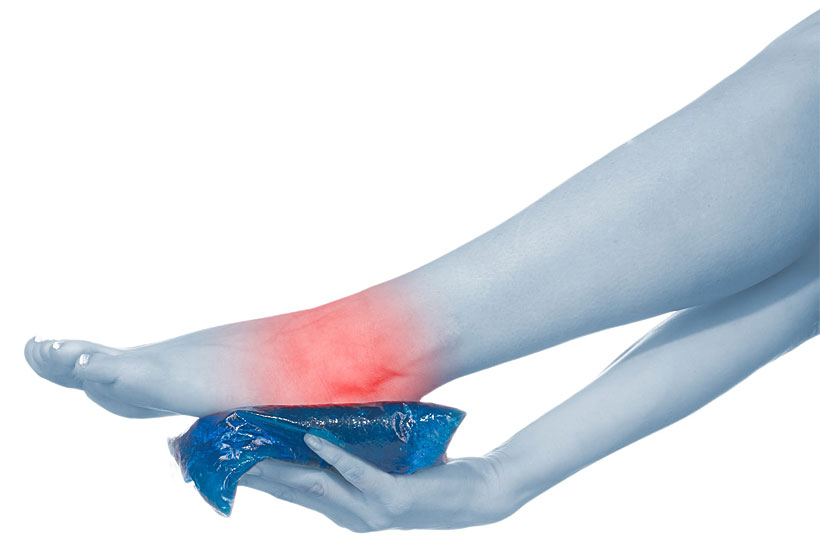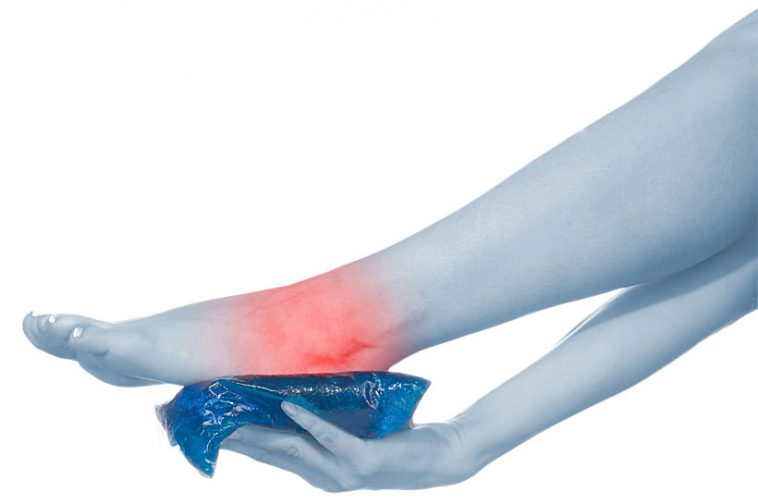- Like
- SHARE
- Digg
- Del
- Tumblr
- VKontakte
- Flattr
- Buffer
- Love This
- Save
- Odnoklassniki
- Meneame
- Blogger
- Amazon
- Yahoo Mail
- Gmail
- AOL
- Newsvine
- HackerNews
- Evernote
- MySpace
- Mail.ru
- Viadeo
- Line
- Comments
- Yummly
- SMS
- Viber
- Telegram
- JOIN
- Skype
- Facebook Messenger
- Kakao
- LiveJournal
- Yammer
- Edgar
- Fintel
- Mix
- Instapaper
- Copy Link
 Ankle sprains are the #1 most common gym injury.
Ankle sprains are the #1 most common gym injury.
But the gym isn’t the only place they happen.
Ankle sprain can happen to anyone including adults, children, non-athletes and athletes.
In fact, it is estimated that at least 25,000 people get ankle sprain on a daily basis.
It usually happens when you lose balance while walking on an uneven surface, or when you land your foot in the wrong way while playing or during other physical activities.
Although ankle sprains are uncomfortable, they are treatable with physical therapy.
So, today our friends from the PTA Guide have put together this guide to help you heal your next ankle sprain should you get one.
However, it is always recommended to consult with a licensed physical therapist who can properly assess your body and injury.
Definition of Ankle Sprain
Joints in the human body are held together by ligaments. There are a lot of ligaments holding joints together and injuries to these ligaments are labeled as sprains. As far as the ankle sprains are concerned, these happen when you twist these ligaments beyond their normal range that causes injury. In some cases, these ligaments may tear.
Ankle sprain varies in severity that depends on the number of injured ligaments and the degree of damage of the injured ligament.
Health experts grade ankle sprain in a range of 1 to 3:
- Mild sprain is ranked grade 1
- Moderate is grade 2
- Severe is grade 3
The grading depends on the severity of the damage.
Health experts also classify the sprains into chronic, acute and recurrent. Sprain that has happened in the recent past and only a few weeks old is labeled as acute sprain. It is actively healing. Sprain that keeps showing symptoms well beyond the normal healing time is labeled chronic sprain.
As the name suggests, a recurrent sprain keeps occurring on a frequent basis and most of the times, with just minimal force.
Effects of Ankle Sprain
If you are suffering from ankle sprain, you will not be able to put any weight on your ankle. You may also have swelling and experience pain. Most of the times, you will start experiencing pain as soon as the ligament tears away. Also, it will start swelling immediately on ligament tear. You will experience pain when you try to move your ankle.
In more severe cases, you will also hear a snap or pop along with ligament tear. In such cases, the sufferer feels extreme pain and is not able to put any weight on the foot. It won’t be wrong to say that the swelling and pain of the ankle is directly proportional to the severity of the ankle sprain.
More severe sprains also take longer to heal.
Diagnosis
It can be diagnosed with a full evaluation by your physical therapist. Stability of your ankle is determined by manual tests. Your physical therapist may also advise you to undergo further tests or consult with another therapist if he or she feels the need.
X-rays are also ordered by the therapist in case there is a chance of a broken bone. MRI is usually ordered by the therapist in cases of severe sprains.
Role of Physical Therapist in Dealing with Ankle Sprain
In order to fully maximize your physical therapy treatment, it is ideal to work with a licensed professional physical therapist (DPT). Although you are in charge of your body and may want to try diagnosing and treating it yourself. The choice is yours.
Treatment for ankle sprains begins by ensuring that the ankle arrests on a comfortable surface such as a stool or pillow for up to the first 48 hours. 10 minutes ice treatments are also effective during the initial treatment. The physical therapist will decide whether cane or crutches are needed for providing protection to the ankle during the healing period.
The therapist may also come up with a personalized treatment plan for your injury to help speed up the recovery. Physical therapy treatments are needed to help get rid of pain and swelling in some cases. Ice treatments, heat treatments, electrical stimulation, special exercises and skilled hand movements that are known as manual therapy are also used by the physical therapist. In more severe cases, a special brace may be required for providing extra support to the ankle.
Recovery Period
The overall goal of physical therapist is to ensure that you are able to perform all the activities again as you used to do before the injury. However, proper rehabilitation is needed to ensure that you do not suffer from serious problems such as joint stability, swelling, chronic pain, and decreased movement.
Physical therapists have a number of treatment plans that include the following.
Muscle Strengthening Exercises
If the ankle muscles are weak, it may result in frequent ankle injuries and an unstable ankle. The physical therapist will guide you to do the rights strengthening exercises for your ankle to help you recover from the injury at a fast rate.
Functional Training
Once you are completely free of pain, your physical therapist will start including some physical activities in your treatment program to help you get back to perform the activities that you were able to do before the injury.
These activities may include jogging, walking, hopping as well as modified running. The activities will depend on the evaluation of your ankle condition as well as on general health and activity level.
Body Awareness and Balance Training
There are specialized exercises which are designed to train your muscle memory. These exercises help you perform activities even when there is a change in the environment including unstable or uneven surfaces.
These activities are usually prescribed by the physical therapist when you do not feel any pain once you put on full weight on the foot. These activities may include standing on a wobble board for exercising the muscles around the ankle and standing on one leg, with or without the eyes closed.
Range of Motion Exercises
Pain and swelling are common results of ankle sprain and these exercises are specially designed for restoration of complete movement to your ankle in a safe and effective manner.
- Alphabet exercise – Moving your ankle in the air, sketch the letters of the alphabet with your foot. Try this 2-3 times daily and you can switch from upper to lower case.
- Circle exercise – Rotate ankles in a circle motion: 5 to 10 in each direction. Try this at least 3 times per day.
Activity Specific Training
Activity specific exercises are specifically designed for a particular type of activity. It may depend on your job requirement as well as the kind of sports you play. In some cases, additional rehabilitation is required to make you fit for that particular activity required for your job or sports.
I can’t leave suggestions here but you should research your specific activities to find exercises that will help with them specifically. Your physical therapist can help you in developing a personalized treatment program to take care of all of these activity specific needs.
Wrapping Up
Not literally, although ankle wraps do help support your ankle if it is tender when applying pressure.
I digress, as for wrapping up this article, now you have the knowledge to plan your physical therapy treatment for your ankle sprain.
These will also improve your mobility and strength which should help prevent future ankle sprains.
As you perform these PT exercises, you may find the routines enjoyable. Especially as a trainer, considering that some of you reading are athletic trainers who deal with injuries regularly.
If you find physical therapy enjoyable then you may want to consider a career in either physical or occupational therapy. With today’s technology, you can even study from anywhere you’d like through one of over 100+ online OTA programs to choose from.
By studying online, you can save your ankles from any potential sprains without all that walking to class. ?

